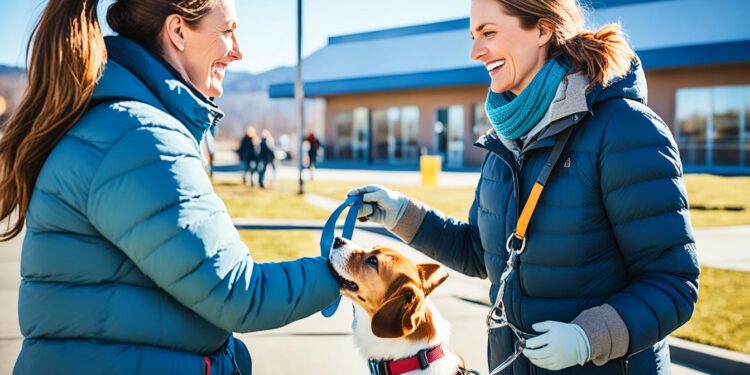Why Adopt, Not Shop? The Critical Choice for Animal Welfare

When it comes to bringing a new furry friend into your home, have you ever wondered why many people advocate for adopting rather than shopping for pets?
While it may seem like a personal preference or a matter of convenience, the choice to adopt or shop has far-reaching implications for animal welfare. By choosing to adopt, you have the power to make a difference in the lives of shelter animals and contribute to a more inclusive and compassionate society.
But is adopting really superior to shopping for pets? What impact does it have on animal welfare? Let’s delve deeper into this critical choice and uncover the truths and misconceptions surrounding pet adoption.
The Increasing Need for Fosters and Adopters in Animal Shelters
Despite the tremendous efforts of animal rescue organizations and shelters, pet adoptions have faced a recent decline, leading to overcrowded shelters and increased strain on resources. Best Friends Animal Society, a prominent advocate for animal welfare, has launched their Adopt & Foster campaign to address this critical issue and encourage individuals to consider pet adoption and fostering as a means of helping animals in need.
A survey commissioned by Best Friends Animal Society shed light on the reasons contributing to the decrease in adoptions. The results revealed that 59% of potential adopters have postponed their plans for various reasons, such as the transition back to the office or upcoming vacations. These external factors have created a temporary setback in the adoption rates, further exacerbating the overcrowding of shelters.
Moreover, this decline in pet adoptions is taking a toll on animal shelters and organizations. Many of them are already facing staffing shortages, resulting in a reduction of programs and services offered. As a result, the decrease in adoptions combined with the increase in shelter intakes has created a crisis for animal shelters nationwide.
It is crucial for the public to recognize the urgent need for adopters and fosters to step up and make a difference. By providing a loving home or temporary care through fostering, individuals can alleviate the burden on shelters and save the lives of countless animals. In addition, volunteering at local shelters can also provide much-needed support to ensure the well-being and comfort of the animals in their care.
Together, we can turn the tide and make a positive impact on animal rescue and welfare. Consider adopting, fostering, or volunteering today to join Best Friends Animal Society and countless other organizations in their mission to find safe and loving homes for pets in need.
The Importance of Pet Adoption and Fostering
Adopting or fostering a pet not only transforms the life of the animal but also brings joy, companionship, and immeasurable benefits to the adopter or foster family. Here are a few reasons why pet adoption and fostering are so vital:
- Save a life: By adopting or fostering, you provide a second chance at life for an animal in need.
- Help alleviate shelter overcrowding: Overcrowded shelters increase stress and reduce the chances of finding forever homes for animals.
- Develop a meaningful connection: Pets can provide unconditional love, companionship, and emotional support.
- Enhance your well-being: Studies have shown that pet ownership can improve mental and physical health.
- Set an example: By adopting or fostering, you inspire others to consider the same path and make a difference in the lives of animals.
Remember, every adoption and foster is a life transformed. Be part of the solution and help create a brighter future for animals in need.
The Crisis in Animal Shelters and the Causes Behind It
Animal shelters across the country are facing a serious crisis as the number of animals entering shelters continues to surpass the number of animals finding forever homes. This imbalance has put a strain on resources and is creating an urgent need for action.
One significant factor contributing to the shelter crisis is the increase in the number of stray animals and pet surrenders. Economic hardships and housing insecurity have forced many pet owners to make the heartbreaking decision to surrender their beloved companions. Additionally, the reduced access to spay and neuter services during the pandemic may have contributed to the rise in stray animals roaming the streets.
Furthermore, veterinary costs and labor shortages within the veterinary and shelter industries exacerbate the challenges faced by animal shelters. The high expenses associated with providing necessary medical care for animals, coupled with the shortage of trained professionals, make it increasingly difficult to meet the needs of the growing number of animals in shelters.
The overcrowding and lack of resources also put at risk the progress made in reducing euthanasia rates in shelters. With limited space and inadequate funds, shelters face the heartbreaking dilemma of making difficult decisions about which animals can be saved.
It is essential for us to come together as a community to address this crisis. People are encouraged to consider adoption or fostering, which can provide temporary relief for shelters and open up space for more animals in need. Volunteering time and donating supplies or funds to local shelters are other impactful ways to support their efforts in caring for stray and surrendered pets. Together, we can make a difference and ensure that every animal has a chance at a loving forever home.
FAQ
Are there certain criteria that can prevent someone from adopting a pet?
Do rescues make assumptions about potential adopters based on subjective criteria?
How has the decrease in pet adoptions impacted animal shelters?
What is Best Friends Animal Society doing to address the decrease in adoptions and available foster homes?
Why are people postponing their plans to adopt a pet?
How can people help alleviate the strain on shelters and save the lives of animals?
What are the main causes behind the crisis in animal shelters?
How are veterinary costs and labor shortages impacting animal shelters?
Why are cat adoption rates higher than dog adoption rates?
How can individuals help address the shelter crisis?
Source Links
- https://ohmydogblog.com/2019/01/how-not-to-adopt-a-pet-removing-barriers-to-pet-adoption/
- https://www.shelteranimalscount.org/americans-cant-afford-their-pets-its-pushing-animal-shelters-to-the-brink/
- https://thehill.com/changing-america/resilience/smart-cities/578510-animal-shelters-in-critical-need-of-more-fosters-and/






